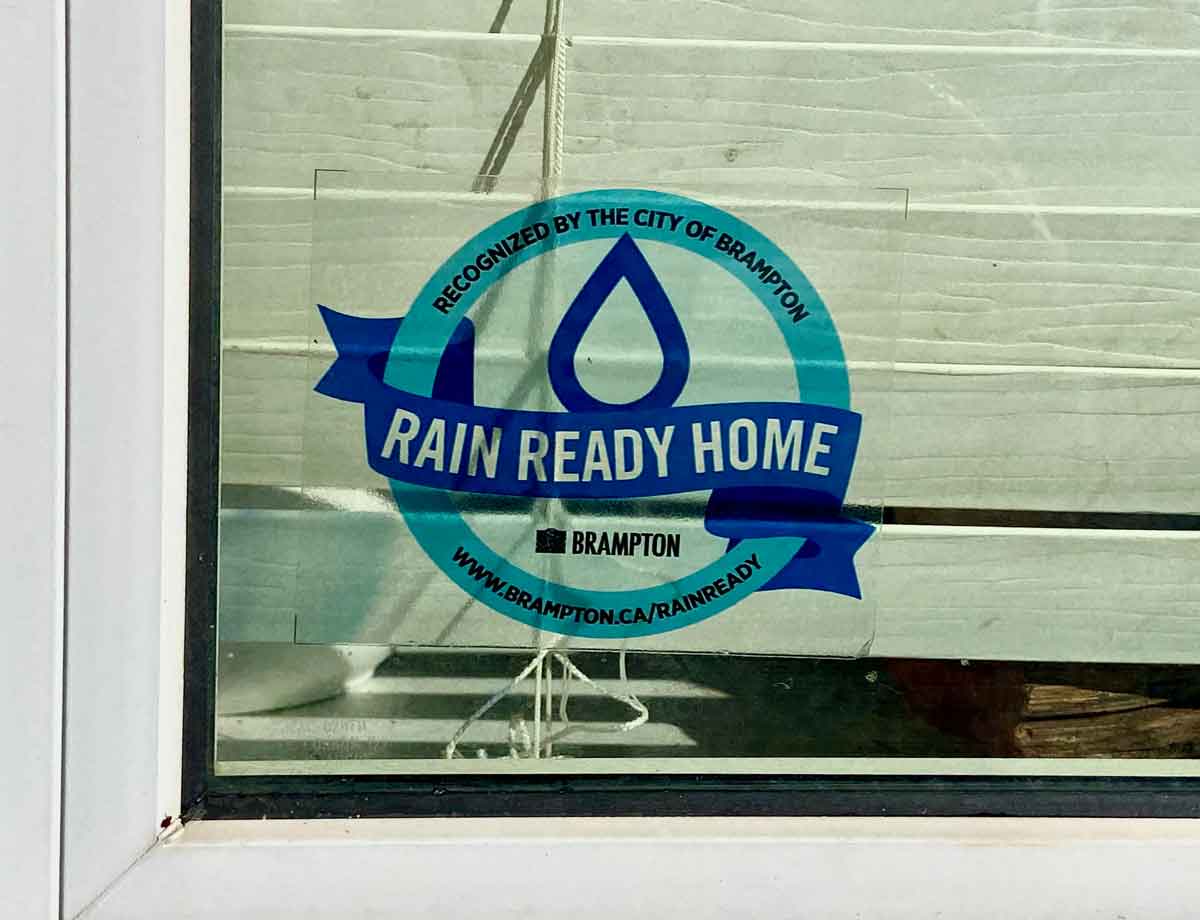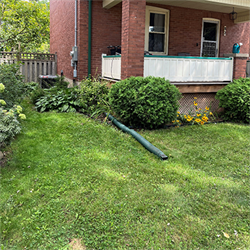Grow Green Recognition - Rain Ready Homes
Want to be recognized as a Rain Ready Home? Share what you are doing to flood-proof your home and absorb rainfall by emailing:
GrowGreen@brampton.ca. Eligible flood prevention actions include any of the recommended actions in the Flood Guide or on this page. Eligible absorption practices include rain gardens, rain barrels, green roofs, permeable pavement, and depaving. We will send you a Rain Ready Home sticker for your window to recognize your contribution towards a safer, greener community!
Learn more:

Rain Ready Champions
Check out the latest submissions to the Rain Ready Challenge by local residents!
Downtown Brampton resident Karli M. added a double downspout extender to move water away from their home’s foundation and toward the lawn, allowing it to be infiltrated where it can most benefit the mature tree canopy.


Image 1 & 2 - Double downspout extender (Photo by Karli M.)
Stacey W added a rainwater collection system on their property. The barrel collects rain at the back of the house and the front garden has a rainwater garden, with a dry river stone bed and native plantings to absorb runoff and support pollinators. Plants include, slender willow, boneset, Culver's root, prairie smoke, wild strawberry, little bluestem, among others...


Image 3 & 4 - Rainwater Collection System (Left), Downspout leading to a Rain Garden (Right) (Photos by Stacey W.)
Leslie M. created a dry river bed as part of their backyard landscaping and have a downspout directed into a rain barrel which drains into the river bed. An additional rain barrel is used to save water when watering plants.
.jpg?RenditionID=9)
.jpg?RenditionID=12)
Image 5 & 6 - Rain Barrel draining to river bed (left), River bed when raining (right)
YOU can be Rain Ready like Karli, Stacey and Leslie and divert your downspout or collect rainwater on your property. Diverting a downspout helps prevent stormwater from seeping into the ground and causing cracks or leaks in your basement walls and foundation, and around windows or doors. Harvesting rainwater is an opportunity to reduce runoff, save drinking water, and utilize a free resource from nature!
